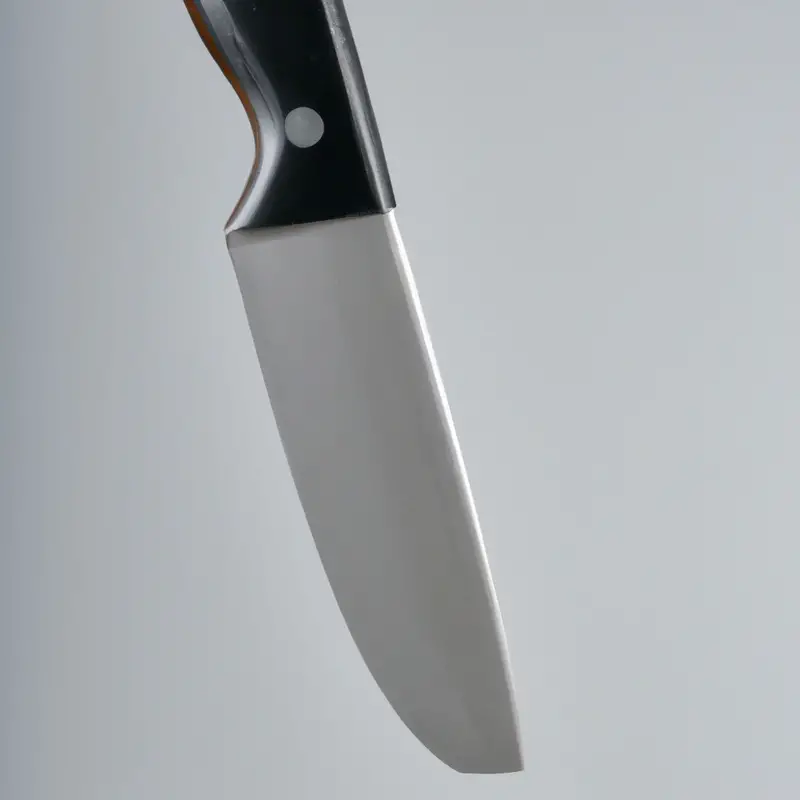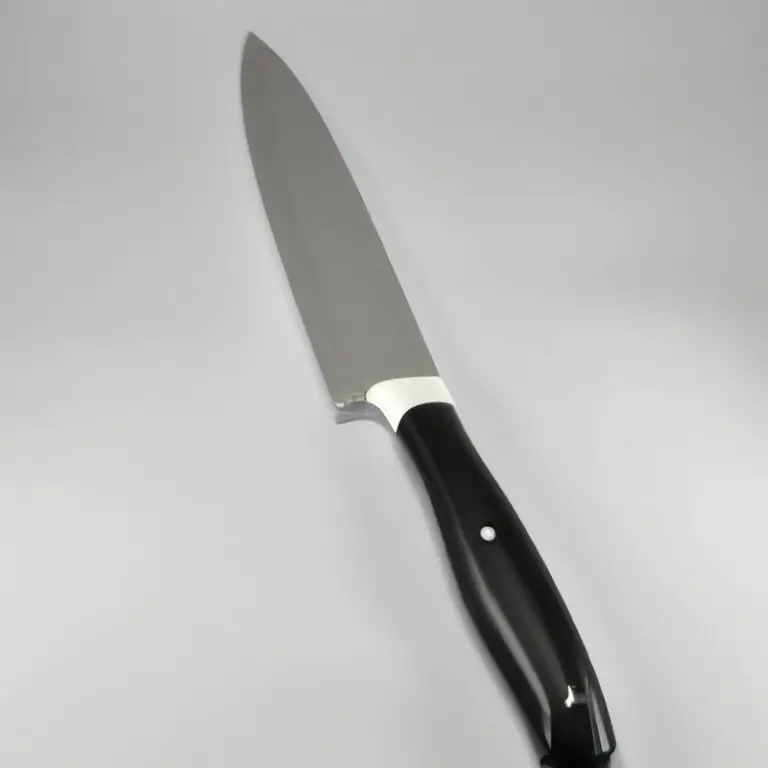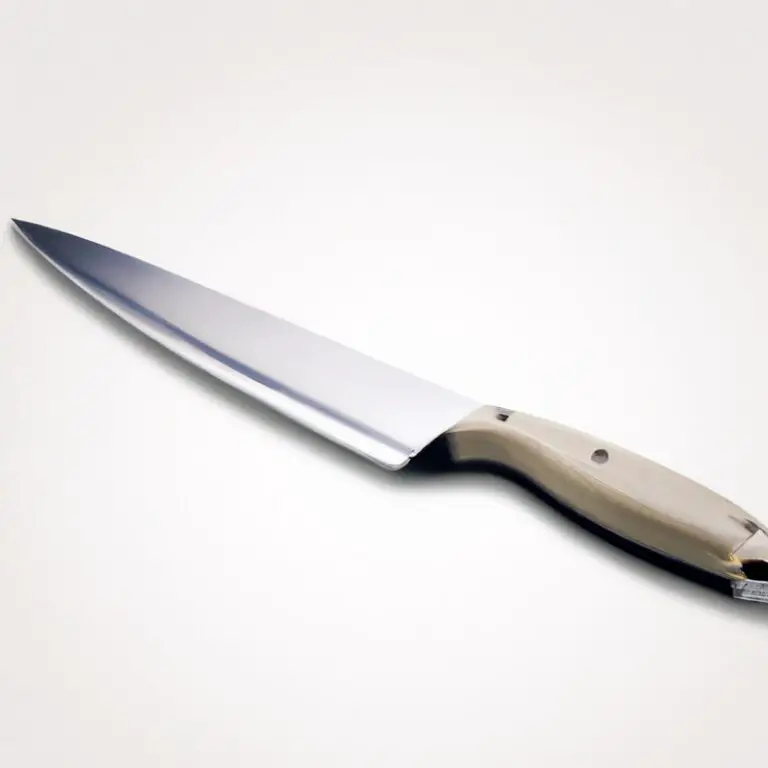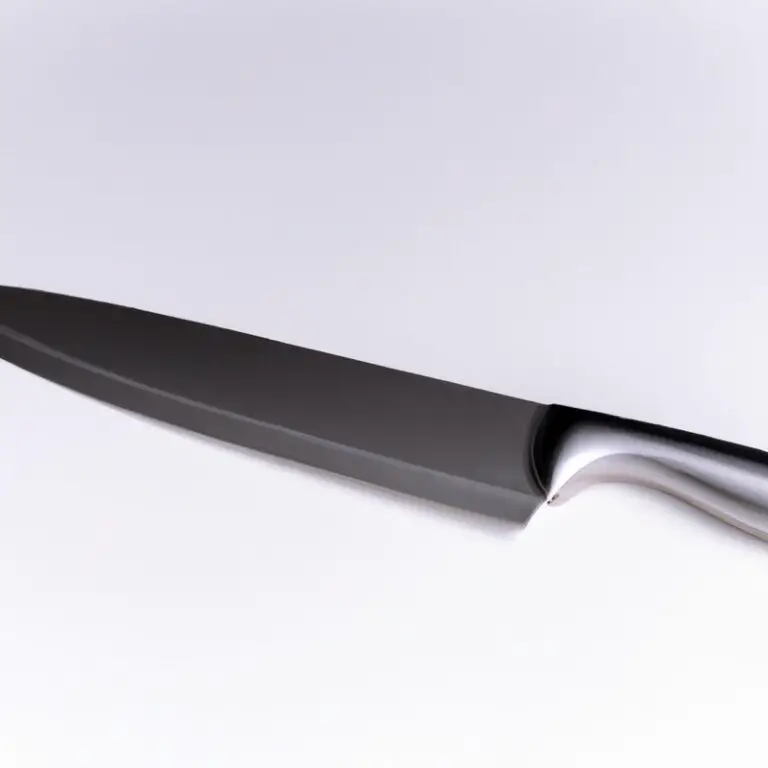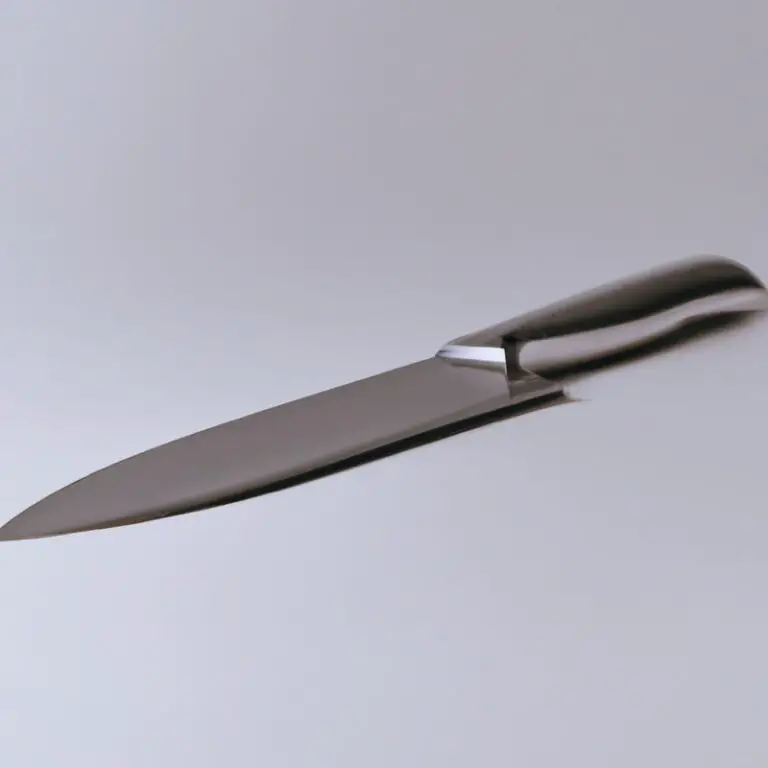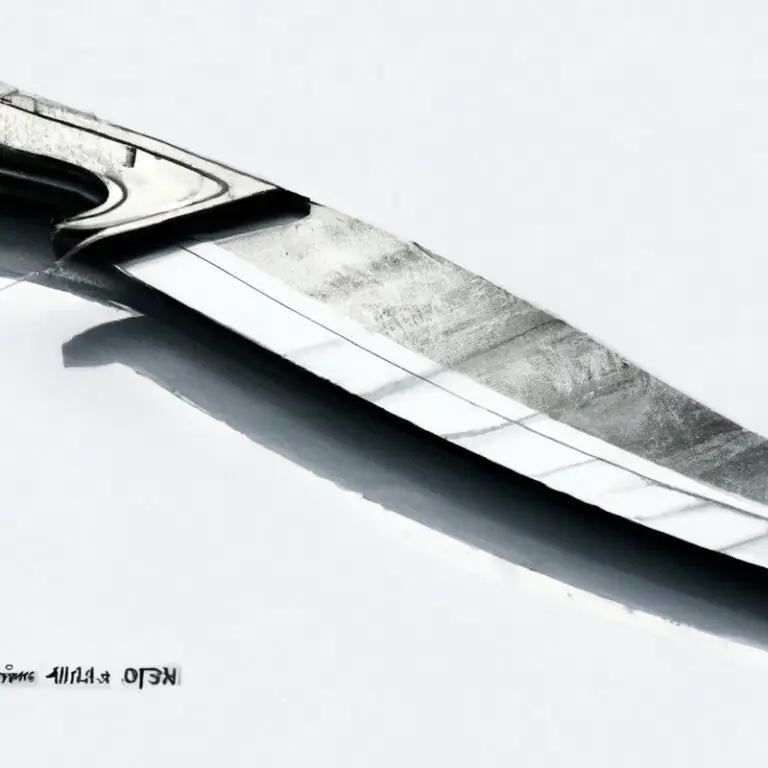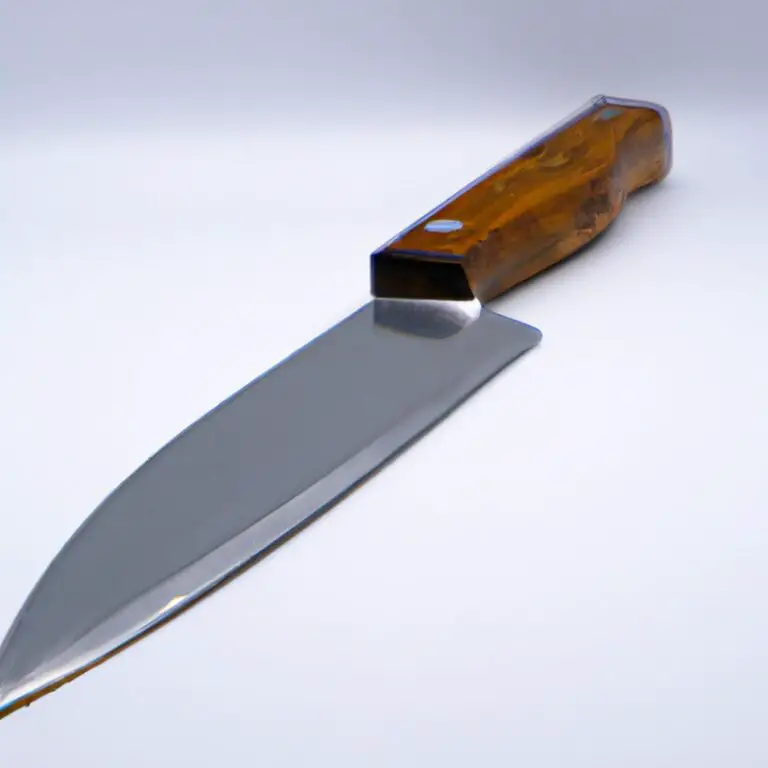What Is The Difference Between a Chef Knife And a Utility Knife?
Key Takeaways:
- Chef knives are larger and designed for more heavy-duty tasks like chopping and slicing, while utility knives are smaller and better suited for general tasks like paring and slicing fruits and vegetables.
- A chef knife typically has a curved blade while a utility knife has a straight blade.
- The choice between a chef knife and a utility knife ultimately comes down to personal preference and the specific tasks you need to accomplish in the kitchen.
- Both knives are essential tools for any kitchen, and investing in high-quality versions of each can greatly improve your efficiency and enjoyment of cooking.
Have you ever wondered what sets a chef knife apart from a utility knife? As someone who spends a lot of time in the kitchen, I understand the importance of having the right tools for the job.
In this article, we’ll break down the differences between these two essential kitchen knives and explore their unique uses.
From blade length to handle design, we’ll examine every aspect to give you a clear understanding of which knife works best for specific tasks. Whether you’re a seasoned chef or just starting in the kitchen, this guide will help you make informed decisions when it comes to choosing your knives.
| Chef Knife | Utility Knife | |
|---|---|---|
| Length of blade | 6-14 inches | 4-7 inches |
| Width of blade | 1.5-3 inches | 1-1.5 inches |
| Weight of blade | 8-10 ounces | 2-5 ounces |
| Uses | Chopping, slicing, and dicing large vegetables and meats | Cutting and preparing smaller fruits, vegetables, and meats |
| Blade shape | Wide, curved blade with a pointed tip | Narrow, straight blade with a pointed tip |
| Handle | Long and straight | Short and straight or curved |
| Price range | $50-300+ | $20-150+ |
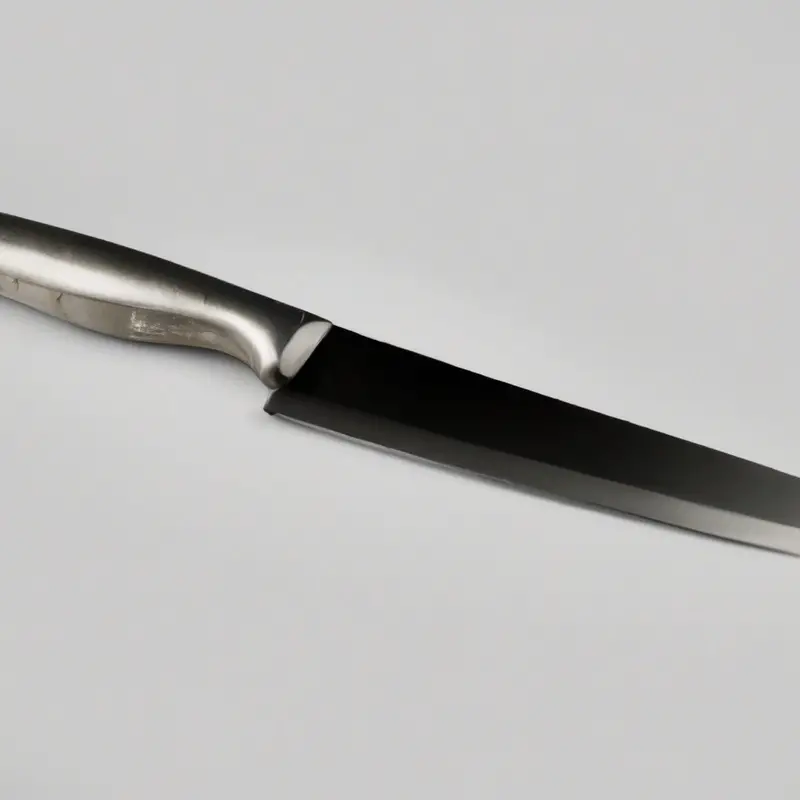
Understanding the Essentials: What a Chef Knife Does Better than a Utility Knife
A chef knife is the most versatile kitchen tool for slicing, chopping, and dicing. Unlike a utility knife, it has a longer blade and a wider surface area that makes it ideal for working with larger ingredients such as vegetables, meats, and fish.
Chef knives also offer more precision and responsiveness, allowing for enhanced cutting control.
Furthermore, a chef knife’s center of gravity is designed for optimal balance, resulting in less wrist strain and fatigue during long periods of use. Overall, a chef knife is the go-to tool for professional chefs and home cooks alike when preparing complex recipes that require diverse cutting techniques.
Why the Shape Matters: Comparing the Blade Length and Width of a Chef Knife and a Utility Knife
The shape of a chef knife and a utility knife plays a crucial role in their functionality. A chef knife typically has a longer blade, ranging from 8 to 10 inches, and a wider blade that gradually curves upwards towards the tip.
On the other hand, a utility knife has a shorter blade, ranging from 4 to 7 inches, and a narrower blade with a straight or slightly curved edge.
The length and width of a chef knife’s blade allow for efficient chopping and slicing of larger ingredients like meat, vegetables, and fruits. The wider blade also provides a larger surface area for the user’s hand to rest on, allowing for better control and stability.
The shorter and narrower blade of a utility knife makes it ideal for precise, detailed work, such as cutting small fruits and vegetables or trimming meat.
The straight or slightly curved edge allows for more accuracy and control when making precise cuts. Ultimately, the length and width of a knife’s blade come down to personal preference and the intended use.
A chef knife is a versatile tool for a range of kitchen tasks, while a utility knife is a valuable addition for more intricate and detailed work.
The Comfort Factor: How the Handle Design of a Chef Knife and a Utility Knife Affect Performance
The handle design of a chef knife and a utility knife affects their performance significantly. Chef knives are designed with a heavier handle to provide better balance and control, while utility knives have a lighter handle for increased maneuverability.
A comfortable and ergonomic grip on the knife handle reduces hand fatigue and enhances precision during cutting.
The handle material also plays a crucial role in performance, with options including wood, plastic, and metal. The convenience of easy cleaning and durability should also be considered when choosing the handle material.
Overall, the handle design of both knives should match the user’s grip style for optimal performance.
Making the Cut: Examining the Uses of a Chef Knife in Comparison to a Utility Knife
A chef knife is best suited for heavy-duty tasks such as chopping vegetables, cutting herbs, or carving meat. A utility knife, on the other hand, is designed for more intricate tasks such as peeling, trimming, and slicing smaller items.
The chef knife’s longer blade allows for smoother cuts through larger items, while the utility knife’s shorter blade offers precision and maneuverability.
Ultimately, both knives are essential in any kitchen, and their uses should be determined by the task at hand.
Looking at the Blade Angle: How a Chef Knife’s Bevel Differs from that of a Utility Knife
The blade angle, or bevel, of a chef knife and a utility knife differs significantly. A chef knife typically has a wider bevel angle, ranging from 15 to 20 degrees, while a utility knife has a narrower bevel angle of around 10 to 15 degrees.
This means a chef knife’s blade is thicker and more robust, suitable for heavy-duty tasks like chopping through bones, whereas a utility knife has a sharper and more delicate edge that is perfect for precise slicing and peeling of fruits and vegetables.
The blade angle is an essential consideration when choosing between a chef knife and a utility knife, depending on the tasks you need to perform in the kitchen.
Responsiveness and Precision: Comparing the Flexibility of a Chef Knife to a Utility Knife
A chef knife is more responsive and precise than a utility knife due to its longer and wider blade, allowing for greater control and accuracy during chopping and slicing tasks. The flexibility of a chef knife also allows it to easily maneuver through tough cuts of meat or thick fruits and vegetables.
On the other hand, a utility knife offers a more versatile and adaptable blade for a range of everyday kitchen tasks.
However, it may not provide the same level of responsiveness and precision as a chef knife for more intricate cutting techniques. Ultimately, choosing between the two comes down to personal preference and the specific needs of the task at hand.
The Essentials of Balance: Exploring How a Chef Knife and a Utility Knife Differ in their Center of Gravity
One major difference between a chef knife and a utility knife is their center of gravity, which affects their balance. Chef knives have a center of gravity near the bolster, giving them more heft and stability for making cuts.
Utility knives, on the other hand, have a more balanced center of gravity along their length, making them nimble and easier to control.
The choice between the two comes down to personal preference and the tasks you need them for. If you need to tackle larger and tougher ingredients, a chef knife’s weight may be more beneficial, but for delicate or intricate cutting tasks, a utility knife may be a better option.
Safety First: Understanding the Significance of a Chef Knife’s Weight and Handle Material
When it comes to chef knives, safety is crucial. The weight of the knife can affect how it feels when in use and the handle material can impact grip and control.
A heavier knife may tire out the user, affecting their accuracy and control, while a lighter knife may not have enough weight to effectively slice through dense foods.
Meanwhile, a handle material that is slippery or uncomfortable to grip can increase the chances of injury due to mishandling. Choosing a well-balanced, comfortable knife with a handle that fits securely in your grip can help promote safer and more efficient cutting in the kitchen.
Carving the Way: The Advantages of a Utility Knife in Preparing Intricate Food Designs
A utility knife is an excellent option for preparing intricate food designs, especially when precision is required. Its smaller size and versatility make it easier to maneuver around the food, allowing you to carve even the tiniest details without damaging the surrounding area.
Utility knives are perfect for trimming poultry, filleting fish, and slicing smaller fruits and vegetables.
The sharp pointed tip helps you easily penetrate tough skin giving you the ability to make precise cuts as well as to get into tight spots. Its smaller size helps provide better control making it an ideal tool for garnishes, carving vegetables, and trimming bacon tents.
Compared to a larger chef knife, a utility knife requires less motion and effort, which is ideal when working on elaborate designs.
For intricate work, a utility knife allows personal expression and creativity in cooking.
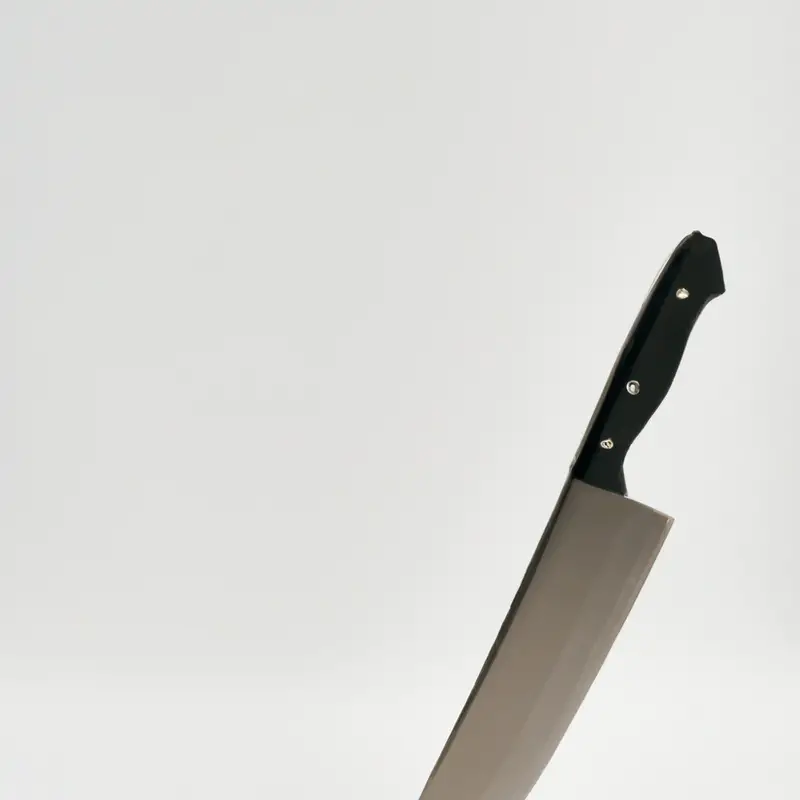
Keeping it Simple: How a Utility Knife Offers Flexibility and Utility in Everyday Kitchen Tasks
A utility knife is an essential tool that offers flexibility and utility in everyday kitchen tasks. It is smaller and lighter than a chef knife, making it easier to handle and control.
Utility knives are ideal for cutting small fruits, vegetables, and herbs.
They are also great for slicing sandwiches, meat, and cheese. One of the key advantages of a utility knife is its versatility.
It can perform many of the tasks that a chef knife can, but with greater precision and control.
For example, a utility knife can be used to trim fat, peel vegetables, and even devein shrimp. Its narrow blade is also great for filleting fish and boning meat.
Another advantage of a utility knife is its size.
It is compact and easy to store in a drawer or on a magnetic strip. It is also lightweight, which makes it less tiring to use over a long period of time.
In summary, a utility knife is an excellent tool that adds versatility and flexibility to everyday kitchen tasks.
It can be used for a wide range of tasks and is easy to handle and control. Whether you are a professional chef or a home cook, a utility knife is an essential tool that should not be overlooked.
Final Verdict
It’s clear that understanding the differences between a chef knife and a utility knife can greatly improve your performance in the kitchen. From the blade shape and bevel to the handle design and weight, the variances between these two knives can significantly impact your safety, precision, and efficiency.
By investing in both a chef knife and a utility knife, you’ll gain optimal flexibility and utility in everyday kitchen tasks and be well prepared to handle intricate food designs.
Regardless of your cooking level, being equipped with the right tools is essential to becoming a successful chef. Trust in the reliability of this information and let it guide you towards making an informed decision before investing in your next kitchen knife.

